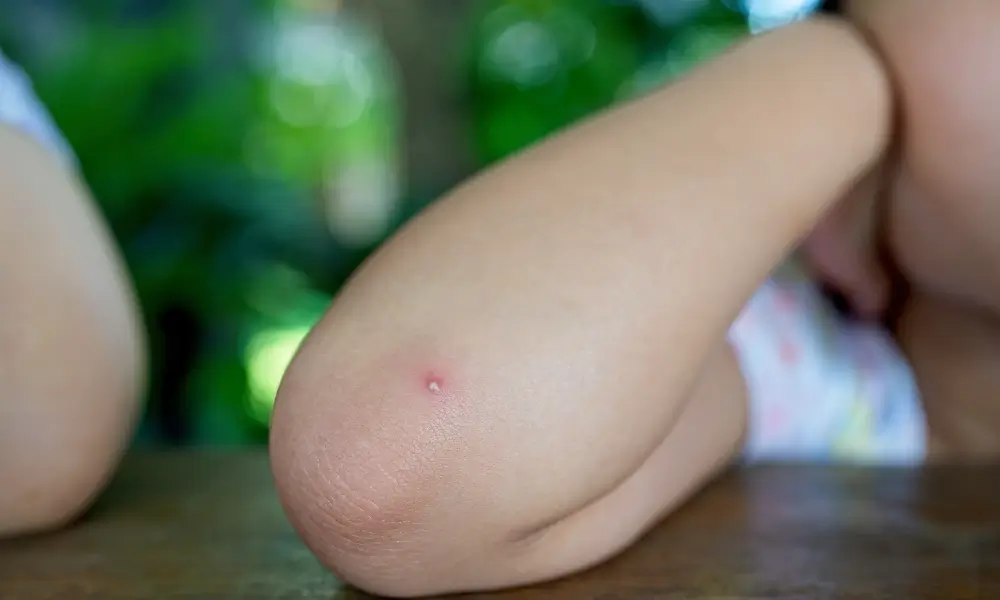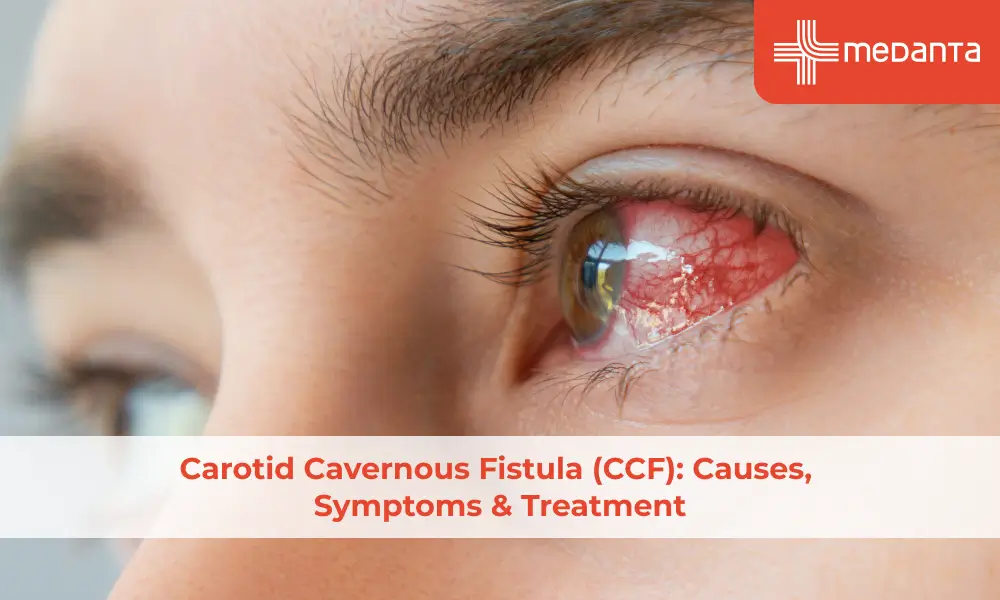Hard Lump Under Skin: Possible Causes and Treatments

TABLE OF CONTENTS
Sebaceous cysts often cause worry when discovered as a hard lump under the skin. Doctors actually classify these lumps as epidermoid cysts. Sebaceous cysts rank among the most common skin growths. These lumps usually don't cause pain unless an infection develops or they press against nearby structures.
What Is a Sebaceous Cyst?
Sebaceous cysts are fluid-filled sacs that contain keratin (a protein found in skin cells) and measure anywhere from 0.25 to over 2 inches across. A blocked hair follicle's trapped skin cells usually trigger their development.
The cyst's appearance includes a round, movable lump with a dark dot (punctum) in its centre. The skin's surface might show pink, red or darker colouration compared to nearby areas. The cyst releases a thick, cheese-like substance with an unpleasant smell when squeezed.
These cysts remain harmless in most cases, but infection or inflammation can cause tenderness and warmth.
You'll commonly find these skin lumps in these areas:
Scalp, face and neck
Back and trunk
Chest and torso
Ears and genitalia
These cysts grow at a slow pace, ranging from a few millimetres to several centimetres across. Doctors classify cysts larger than 5cm as "giant cysts". These larger ones need careful monitoring.
Causes of Sebaceous Cysts
Blocked glands or follicles: Cysts can form when oil glands or hair follicles clog up.
Skin injury: Oil can get trapped under the skin's surface due to damage.
Folliculitis: Cysts may develop from inflammation around hair follicles.
Excess oil secretion: Overactive sebaceous glands might clog and block pores.
Genetic conditions: Disorders like Gardner's syndrome can increase the chance of cysts.
Cosmetic products: Heavy creams or makeup can block pores and result in cyst formation.
Hormonal changes: Shifts in hormones can boost oil production resulting in cysts.
The chance of getting these cysts is highest in middle age, and young adult men are the group most likely to have them.

Symptoms and Signs to Watch For
The following are common symptoms of sebaceous cysts:
A soft round bump under the skin that moves a bit when touched
A small dark dot or hole in the middle showing where the gland is blocked
The lump grows as time passes
Sometimes thick yellow pus with a bad smell comes out if it breaks open
The area turns red, feels warm, or hurts when the cyst gets irritated or infected
You might feel pressure or mild discomfort where the cyst is
Complications
These cysts rarely cause serious problems, but about 1% can develop into squamous cell carcinoma or basal cell carcinoma. Large cysts, especially in visible areas, can cause psychological distress.
Diagnosis
A doctor's medical history review and physical examination start the process of diagnosing skin lumps. The doctor checks the lump's size, appearance, mobility, and tenderness to identify a sebaceous cyst.
Visual examination works well in most cases, but additional tests can help confirm the diagnosis:
Ultrasound scans create detailed images with sound waves that tell cysts apart from other masses
Imaging tests like MRI or CT scans might help with deeper cysts
A biopsy becomes important if cancer is suspected
Treatment
Treatment choices depend on how severe the symptoms are. Small cysts without symptoms don't need treatment - good hygiene is enough. All the same, medical help becomes vital when the cyst:
Gets bigger faster or hurts
Shows infection signs (redness, warmth, tenderness)
Breaks open or looks concerning
Makes daily activities difficult
Several treatments can work well:
Antibiotics fight any infection
Steroid injections reduce inflammation
Incision and drainage help infected cysts (but they might come back)
Surgical excision removes the cyst and its wall completely
Laser therapy leaves minimal scarring
Squeezing or popping a hard lump under your skin at home raises infection risk and doesn't fix why it happens. A professional removal will give a better chance of removing the entire cyst wall and preventing it from coming back.
Prevention Tips for Sebaceous Cysts
Although not every sebaceous cyst is preventable but you can reduce the risk by adopting the following habits:
Clean your skin each day to stop oil and dirt from blocking pores.
Scrub once or twice a week to help your skin breathe and renew on its own.
Pick light, pore-friendly skincare and makeup items.
Don't squeeze pimples or bumps, as this can push oil deeper.
Wash up after you work out to remove sweat and germs from your skin.
Keep oily spots in check with mild cleansers approved by dermatologists.
Treat acne or infections before they grow into cysts.
Boost skin health by drinking lots of water and eating fruits and nutrient-packed foods.
When to See a Doctor
You should see a doctor right away if your skin lump has these signs:
Pain, swelling, warmth or redness - this might show an infected cyst
Quick changes or growth in size
Non-stop irritation
Pain when you touch it
Any lumps on fingers or toes (this is extra important if your family has a history of colon cancer)
Pus or bad-smelling fluid coming out
Fever or chills along with the lump
Size bigger than 5 centimetres
Doctors want to check any new skin growths because some skin cancers can look like cystic nodules. A quick medical check will give a proper diagnosis.
Cysts without symptoms sometimes need medical care too. Lumps in special areas like your mouth or face might need a specialist's look.
Living With a Sebaceous Cyst
Living with a skin lump creates unique challenges in daily life. Sleep becomes difficult because cysts on the head make pillow rest uncomfortable. Simple tasks like combing hair turn into painful experiences when scalp cysts exist.
These lumps don't just cause physical pain - they create emotional distress too. A visible bump can affect your confidence and social interactions, especially when it appears in exposed areas.
To manage discomfort at home:
Apply warm, moist compresses for 20-30 minutes several times daily
Take over-the-counter pain relievers such as acetaminophen or ibuprofen
Keep the area clean with mild soap and water
Cover with a clean bandage if drainage occurs
Most cysts don't need immediate medical care, but you shouldn't ignore them. Never try to squeeze or pop a cyst yourself - this makes infection much more likely.
Treatment recovery time depends on the procedure. Surgical removal needs several weeks to heal, while steroid shots have minimal downtime. Both options ended up improving life quality by addressing the physical and emotional burden that skin lumps create.
FAQs
What exactly is a sebaceous cyst?
A sebaceous cyst isn't what its name suggests. These lumps are epidermoid cysts that contain keratin (a protein in skin cells) instead of sebum oil. They develop beneath the skin's surface and grow slowly. The cysts rarely hurt unless they get infected.
What causes sebaceous cysts to form?
These skin lumps develop because hair follicles or pores get blocked. Skin trauma, sun damage, or genetics might trigger their formation. Some medications like BRAF inhibitors or cyclosporine can increase your risk too.
Are sebaceous cysts contagious?
You can relax - sebaceous cysts aren't contagious at all. Physical contact or sharing personal items won't spread them from person to person.
How can I tell if a lump is a sebaceous cyst or something else?
These cysts look like round, mobile bumps with a dark dot (punctum) in the middle. They move easily under pressure. Sometimes they release thick, cheese-like material that smells unpleasant.
When should I see a doctor about a sebaceous cyst?
You should get medical help if your lump grows quickly, becomes painful, shows infection signs (redness, warmth), or causes you concern.
Can sebaceous cysts go away on their own?
These cysts need treatment to disappear completely. They usually stay the same size or grow slowly. Small cysts might burst and drain naturally, but this happens rarely.
What treatment options are available for sebaceous cysts?
Your doctor can treat skin lumps in several ways depending on their size and symptoms. The common treatments include:
Steroid injections that reduce swelling
Draining infected lumps through small cuts
Complete removal through surgery
Laser treatment to minimise scarring
Antibiotics when infections occur
Is surgical removal the only way to get rid of a sebaceous cyst?
No. Surgery works best, but you have other choices too. Small cysts might respond to warm compresses. Steroid shots can bring down swelling. Some cases might only need tiny incisions - a much simpler approach than full surgery.
Can sebaceous cysts become infected? What are the signs?
These lumps can definitely get infected. You should look out for:
Redness that spreads around the area
More pain when you touch it
The area feels hot
Drainage or bad smell
A fever
How can I prevent sebaceous cysts from forming in the future?
Good skin care makes a big difference. Clean your skin with mild soap and don't pick at it. The sun's rays can damage your skin, so protect it well. Take care of any acne or skin problems quickly to prevent blockages. Some people get these lumps whatever they do to prevent them.





